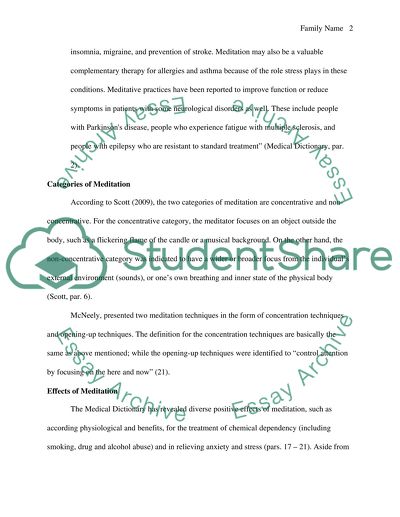Cite this document
(“Meditation Assignment Example | Topics and Well Written Essays - 1250 words”, n.d.)
Retrieved from https://studentshare.org/other/1426210-meditation
Retrieved from https://studentshare.org/other/1426210-meditation
(Meditation Assignment Example | Topics and Well Written Essays - 1250 Words)
https://studentshare.org/other/1426210-meditation.
https://studentshare.org/other/1426210-meditation.
“Meditation Assignment Example | Topics and Well Written Essays - 1250 Words”, n.d. https://studentshare.org/other/1426210-meditation.


